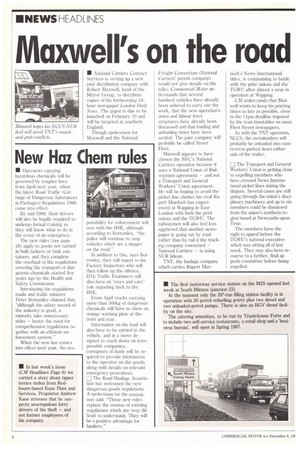New Haz (hem rules
Page 8

If you've noticed an error in this article please click here to report it so we can fix it.
• Operators carrying hazardous chemicals will be governed by tougher laws from April next year, when the latest Road Traffic (Carriage of Dangerous Substances in Packages) Regulations 1986 come into effect.
By mid-1988, their drivers will also be legally required to undergo formal training so they will know what to do in the event of an emergency.
The new rules (see page 26) apply to goods not carried in bulk tankers or tank containers, and they complete the overhaul of the regulations covering the transport of dangerous chemicals started five years ago by the Health and Safety Commission.
Introducing the regulations roads and traffic minister Peter Bottomley claimed that, "although the safety record of the industry is good, a minority take unnecessary risks — hence the need for comprehensive regulations together with an efficient enforcement system."
When the new law comes into effect next year, the res
ponsibility for enforcement will rest with the HSE, although according to Bottomley, "the police will continue to stop vehicles which are a danger on the road."
In addition to this, says Hottomley, they will report to the Factory Inspectors who will then follow up the offence. DTp Traffic Examiners will also have an "eyes and ears" role reporting back to the HSE.
From April trucks carrying more than 500kg of dangerous chemicals will have to show an orange warning plate at the front and rear.
Information on the load will also have to be carried in the vehicle, and in a move designed to crack down on irresponsible companies, consignors of loads will be required to provide information to the operator on the goods, along with details on relevant emergency procedures.
The Road Haulage Association has welcomed the new dangerous goods regulations. A spokesman for the association said: "These new rules replace the morass of existing regulations which are very difficult to understand. They will be a positive advantage for hauliers."














































































































